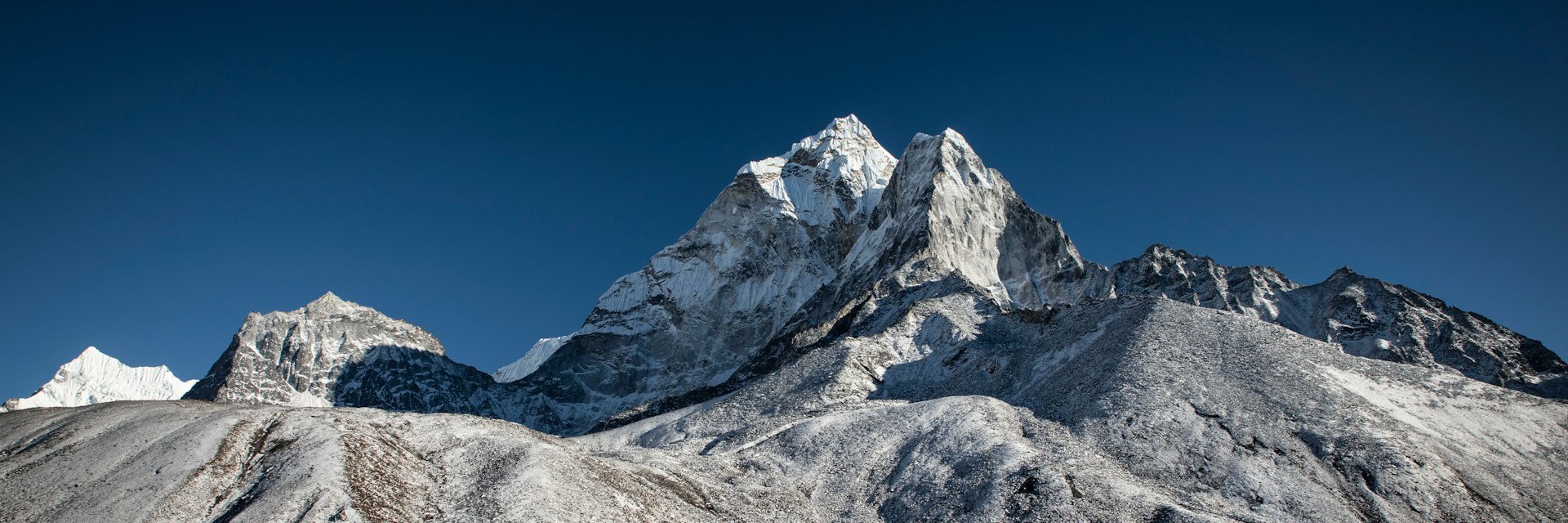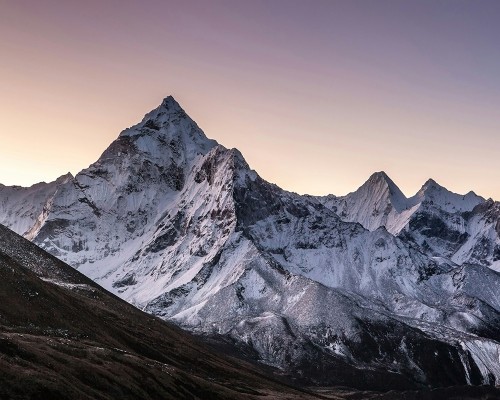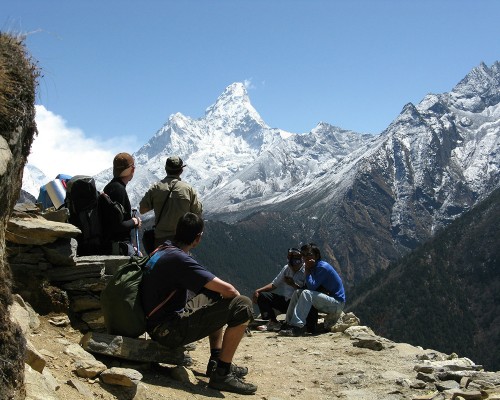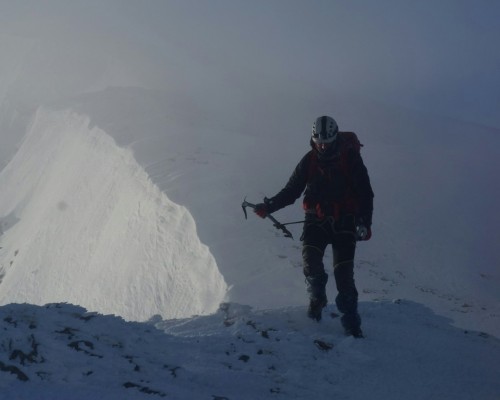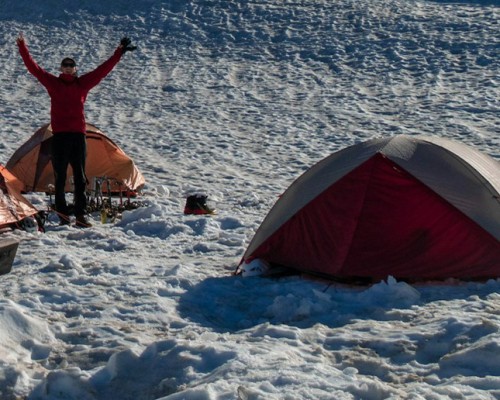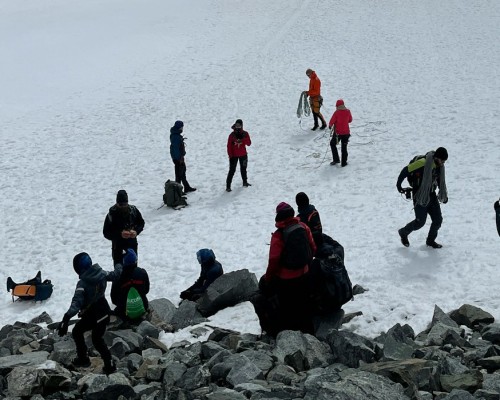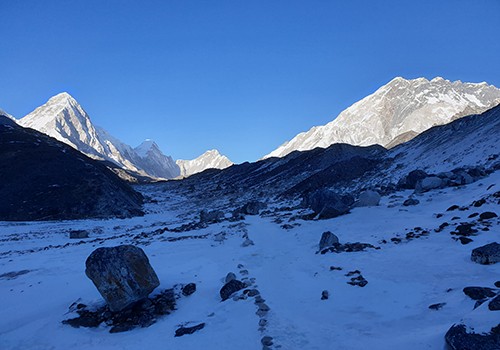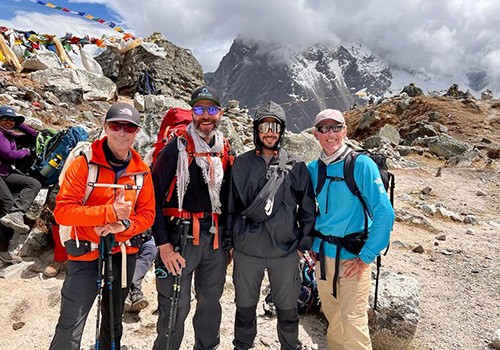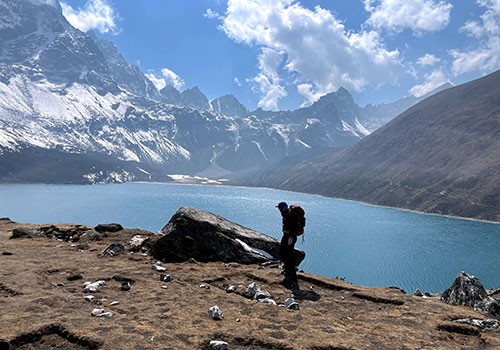The Ama Dablam Expedition is a dream adventure for mountaineers seeking to conquer one of the most iconic peaks in the Himalayas. Standing at 6,814 meters (22,349 feet), Ama Dablam is often referred to as the "Matterhorn of the Himalayas" due to its stunning pyramid-like shape. Located in the Everest region of Nepal, this expedition offers an unparalleled combination of technical climbing, breathtaking scenery, and cultural immersion.
Ama Dablam, which translates to "Mother’s Necklace," is named after the hanging glacier resembling a sacred pendant worn by Sherpa women. The peak’s beauty and challenging routes have made it a favorite among climbers worldwide. The expedition is designed for experienced climbers who are comfortable with steep rock and ice climbing and have prior high-altitude experience.
Good to Know
- Grade: Mountaineering
- Elevation: 6,814m (22,334ft)
- Location: Nepal/Everest region
- Coordinates: 27°51′40″ n 86°51′40″ e
- First ascent: Maurice Herzog (Nepal), June 3, 1950
- Season: Spring (April-May) and autumn (October-December)
- Duration: 27 days (typically)
- Group size: 02-15 people per group
Heading to the Khumbu Region
The journey begins in Kathmandu, Nepal’s vibrant capital, where climbers prepare for the adventure ahead. From Kathmandu, a scenic flight takes you to Lukla, the gateway to the Everest region. The trek to Ama Dablam Base Camp is an adventure in itself, passing through picturesque Sherpa villages, lush forests, and stunning mountain landscapes. Along the way, climbers acclimatize at iconic locations such as Namche Bazaar and Tyangboche, where they can explore monasteries and experience Sherpa culture.
Summit Ama Dablam
Ama Dablam Base Camp, situated at 4,600 meters (15,091 feet), serves as the staging area for the climb. The ascent involves establishing multiple camps on the mountain, including Camp 1, Camp 2, and Camp 3. Each camp offers unique challenges, from technical rock climbing to navigating steep ice sections. The route is demanding but well-supported, with fixed ropes and guidance from experienced climbing leaders.
The summit day is the culmination of weeks of preparation and effort. Climbers are rewarded with breathtaking panoramic views of the Himalayas, including Everest, Lhotse, and Makalu. The sense of accomplishment upon reaching the summit is unparalleled, making this expedition a life-changing experience for many.
Safety is a top priority throughout the expedition. The team follows a carefully planned itinerary to ensure proper acclimatization and minimize risks. Expert guides, porters, and support staff provide assistance every step of the way, ensuring a safe and enjoyable journey.
Extraordinary Experience
Beyond the climb, the Ama Dablam Expedition offers a deep connection to the natural beauty and cultural richness of the Everest region. Trekkers have the opportunity to interact with the local Sherpa community, visit ancient monasteries, and immerse themselves in the traditions of the Himalayas. This cultural aspect adds a unique dimension to the adventure, making it more than just a climbing expedition.
The expedition concludes with a return trek to Lukla and a flight back to Kathmandu. Climbers often take this time to reflect on their achievements and celebrate the journey with their team. The memories of standing on the summit of Ama Dablam and experiencing the grandeur of the Himalayas will last a lifetime.
The Ama Dablam Expedition is not just a climb; it is a journey of self-discovery, resilience, and connection to the mountains. It challenges you physically and mentally while rewarding you with unmatched views and experiences. For those seeking a technical climb combined with cultural exploration, Ama Dablam is the ultimate adventure.

